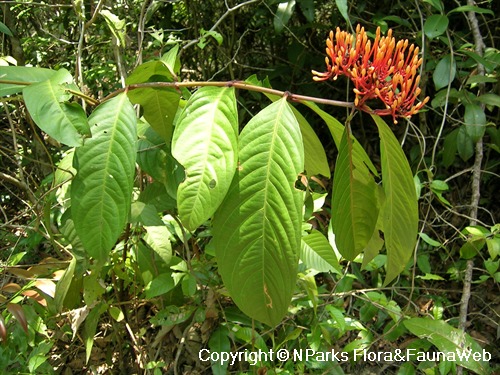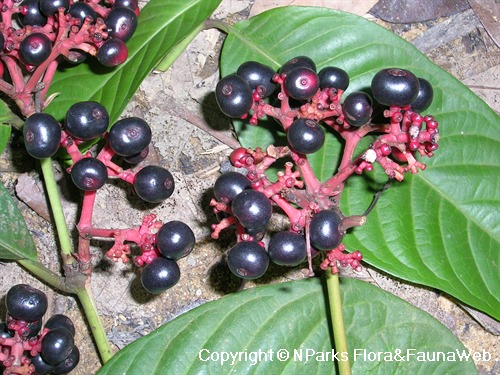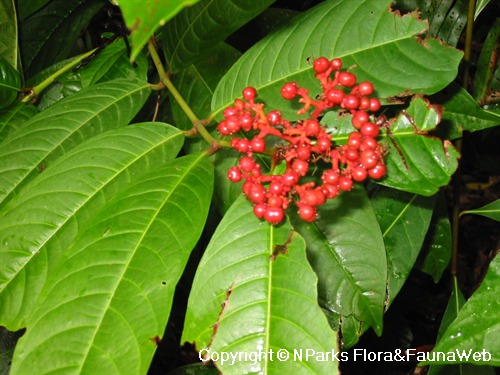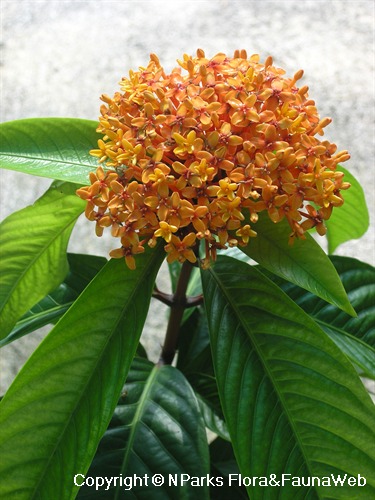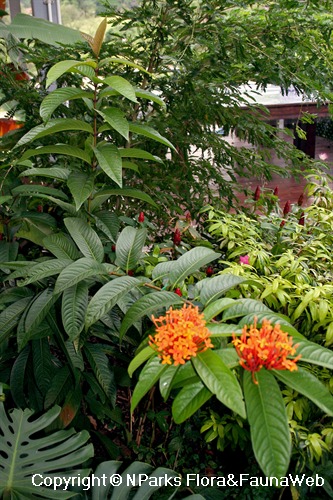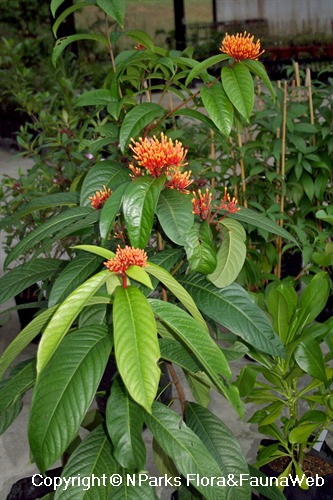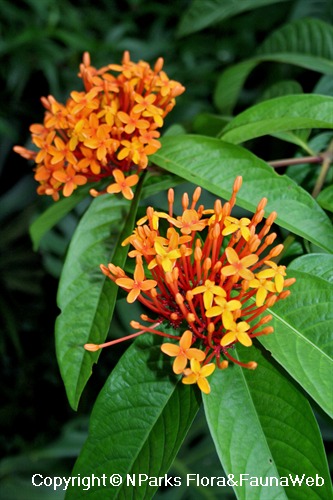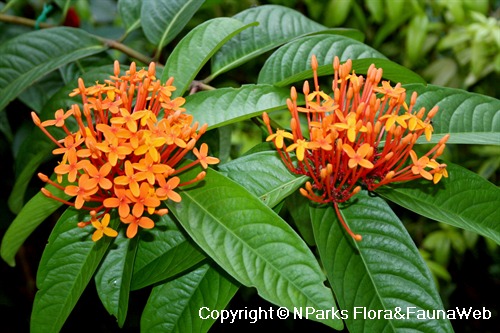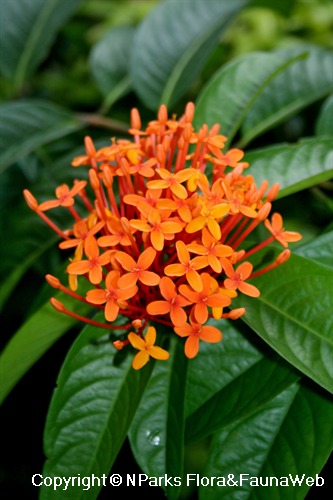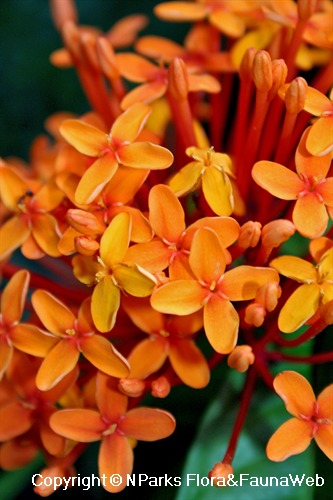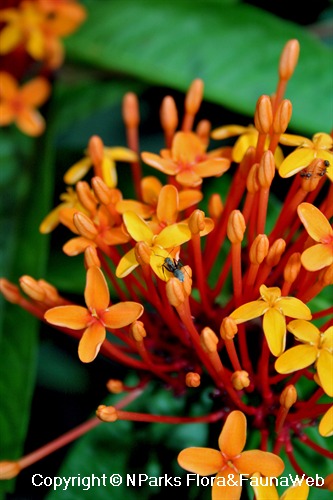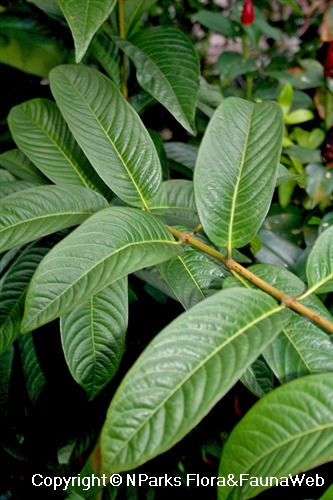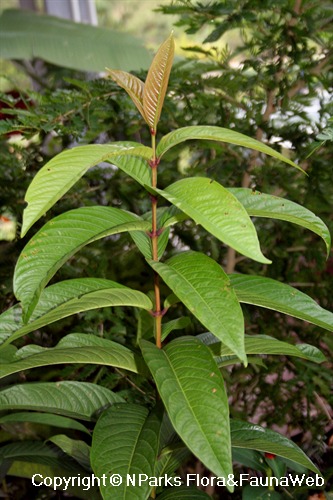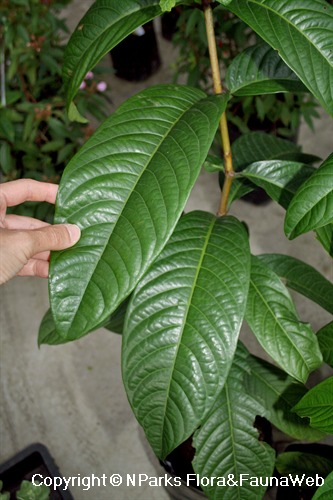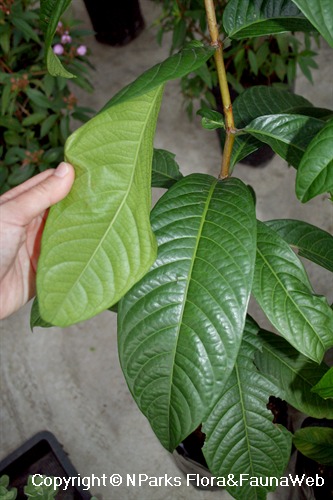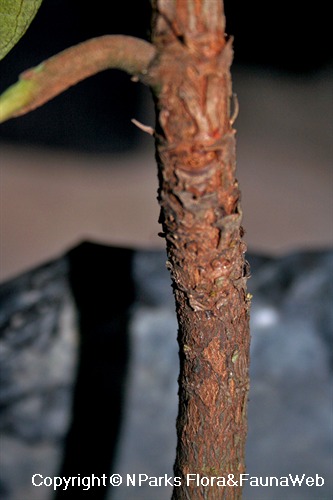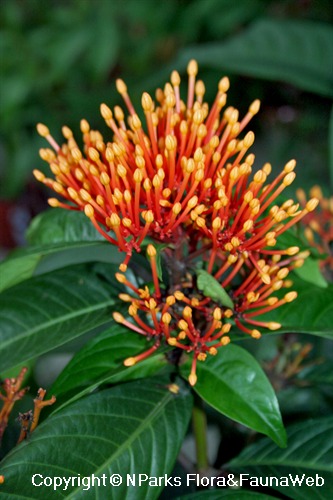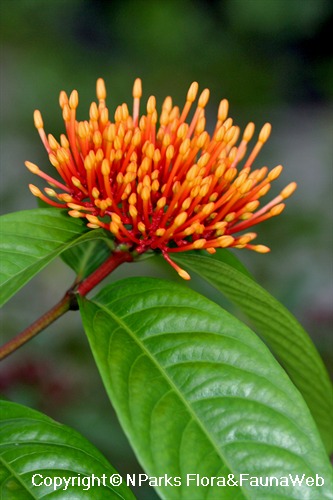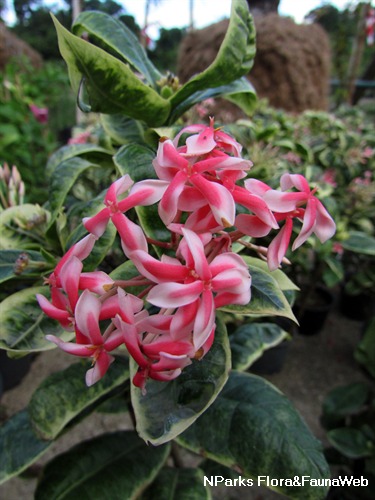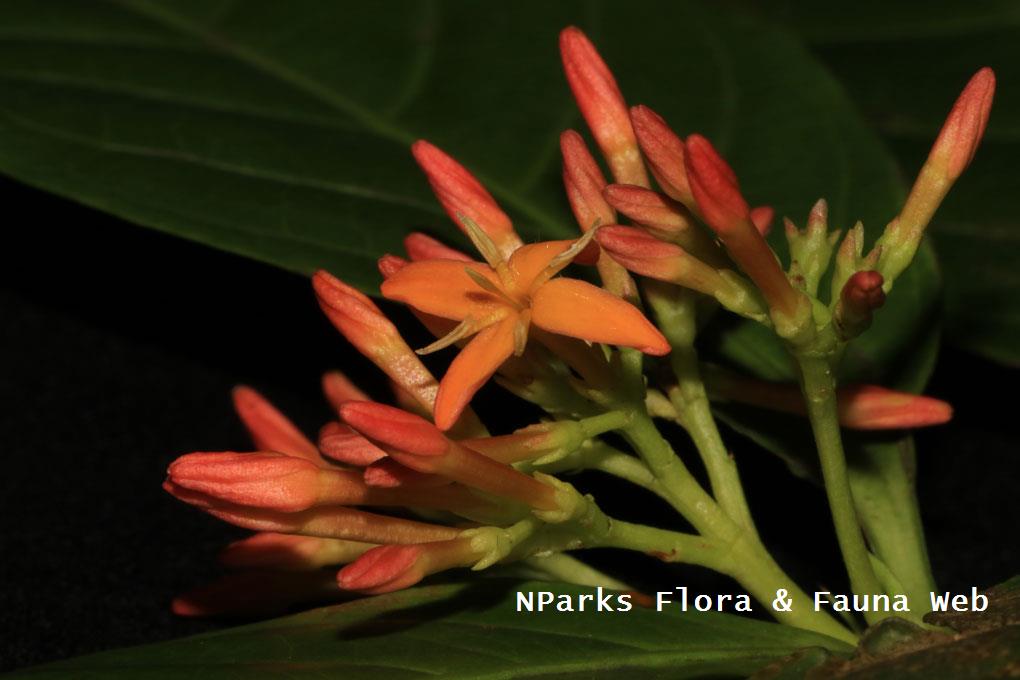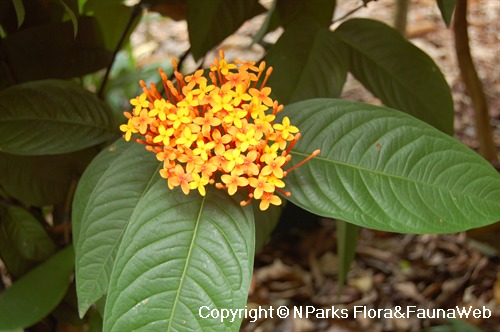
Back
Ixora congesta Roxb.
| Family Name: | Rubiaceae |
| Synonyms: | Pavetta congesta, Ixora griffithii |
| Common Name: | Malayan Ixora, Jarum-jarum, Khem Deang |
Name
Classifications and Characteristics
| Plant Division | Angiosperms (Flowering Seed Plants) (Dicotyledon) |
|---|---|
| Plant Growth Form | Shrub, Tree (Small (6m-15m), Shrubby (1m-5m)) |
| Lifespan (in Singapore) | Perennial |
| Mode of Nutrition | Autotrophic |
| Plant Shape | Shrubby |
| Maximum Height | 2 m to 7 m |
Biogeography
| Native Distribution | Myanmar, Peninsular Malaysia, Singapore, Indonesia |
|---|---|
| Native Habitat | Terrestrial (Monsoon Forest, Secondary Rainforest, Primary Rainforest) |
| Preferred Climate Zone | Sub-Tropical / Monsoonal, Tropical |
| Local Conservation Status | Native to Singapore (Least Concern (LC)) |
Description and Ethnobotany
| Growth Form | Big woody shrub or small understorey tree, reaching 6-7m height under forested conditions. |
|---|---|
| Foliage | Leaves large (12-30cm long), elliptical to oblong, fairly thick and leathery. Lateral veins in 12-20 pairs, distinctly-depressed, thus imparting a bullate appearance to upper leaf surface. Mature leaves dark green above and paler green below. Young leaves emerge glossy-bronze, with prominent venation. |
| Stems | Basal stems woody, with slightly peeling reddish-brown bark. Leafy stems semi-woody, with reddish Internodes. |
| Flowers | Trumpet-shaped, emerging bright yellow and turning reddish-orange, scentless. Flower stalks red. Seasonally produced, clustered into many-flowered corymbiform inflorescences 15-20cm across. Visited by nectar-seeking insects like ants and butterflies. Unopened flower buds resemble a bunch of needles (hence the plant's Malay name 'Jarum-jarum'). |
| Fruit | Globose berries with thin pulp, 7-12mm across, ripening from green to red to purplish-black, each containing 1-2 relatively large seeds, eaten by birds. |
| Others - Plant Morphology | Local Conservation Status: Native, common. Locally found in MacRitchie and Pulau Ubin forests. |
| Habitat | Occurs in inland and coastal rainforests. Naturally distributed from southern Myanmar and Peninsular Malaysia to the Moluccan Islands, but has never been found wild in Thailand. |
| Cultivation | Prefers semi-shade (unlike the exotic cultivars). Tolerant of coastal sites. May have somewhat irregular and lanky branching when young. Propagate by seeds or stem cuttings (use rooting hormone to aid rooting). |
| Etymology | Genus epithet 'Ixora' named after Malabar-Indian deity Iswara, who is assocated with the sacred Ixora coccinea (Jungle Flame) and in turn worshipped with its flowers. Species epithet 'congesta' means 'crowded' or 'congested', a reference to the dense inflorescence clusters. |
Landscaping Features
| Desirable Plant Features | Ornamental Flowers, Ornamental Fruits |
|---|---|
| Landscape Uses | Coastal, General, Flowerbed / Border, Container Planting |
| Thematic Landscaping | Butterfly Garden, Naturalistic Garden |
Fauna, Pollination and Dispersal
| Fauna Pollination Dispersal Associated Fauna | Bird-Attracting, Butterfly Host Plant, Butterfly-Attracting |
|---|---|
| Pollination Method(s) | Biotic (Fauna) (Insects (Butterfly, Moth), Insects (Ant, Beetle, Fly, Thrip, Wasp)) |
| Seed or Spore Dispersal | Biotic (Fauna) |
Plant Care and Propagation
| Light Preference | Semi-Shade |
|---|---|
| Water Preference | Moderate Water |
| Plant Growth Rate | Moderate |
| Rootzone Tolerance | Fertile Loamy Soils, Well-Drained Soils |
| Maintenance Requirements | Moderate |
| Propagation Method | Seed, Stem Cutting |
Foliar
| Foliage Retention | Evergreen |
|---|---|
| Mature Foliage Colour(s) | Green |
| Mature Foliage Texture(s) | Leathery, Raised / Sunken Veins, Thick |
| Foliar Type | Simple / Unifoliate |
| Foliar Arrangement Along Stem | Opposite |
| Foliar Shape(s) | Non-Palm Foliage (Elliptical, Oblong) |
| Foliar Venation | Pinnate / Net |
| Foliar Margin | Entire |
| Foliar Apex - Tip | Acuminate |
| Foliar Base | Rounded / Obtuse |
| Typical Foliar Area | Macrophyll ( 182.25cm2 - 1640.25 cm2 ) |
| Leaf Area Index (LAI) for Green Plot Ratio | 4.5 (Shrub & Groundcover - Dicot) |
| Prominent Young Flush Colour(s) Remarks | Bronzy |
Non - Foliar and Storage
| Bark Colour(s) | Reddish-brown |
|---|---|
| Mature Bark Texture | Peeling / Flaking / Papery, Scaly |
| Stem Type & Modification | Woody |
| Root Type | Underground (Tap Root, Fibrous Root) |
Floral (Angiosperm)
| Flower & Plant Sexuality | Bisexual Flowers |
| Flower Colour(s) | Orange |
|---|---|
| Flower Symmetry | Radial |
| Inflorescence Type | Corymb |
| Flower Lifespan on Plant | Several Days |
| Flowering Habit | Polycarpic |
| Inflorescence Size Remarks | Open yellow & mature to orange |
| Flowering Period Remarks | Seasonally |
Fruit, Seed and Spore
| Mature Fruit Colour(s) | Black, Purple |
|---|---|
| Fruit Classification | Simple Fruit |
| Fruit Type | Fleshy Fruit , Berry |
Image Repository
Others
| Master ID | 833 |
|---|---|
| Species ID | 2128 |
| Flora Disclaimer | The information in this website has been compiled from reliable sources, such as reference works on medicinal plants. It is not a substitute for medical advice or treatment and NParks does not purport to provide any medical advice. Readers should always consult his/her physician before using or consuming a plant for medicinal purposes. |

